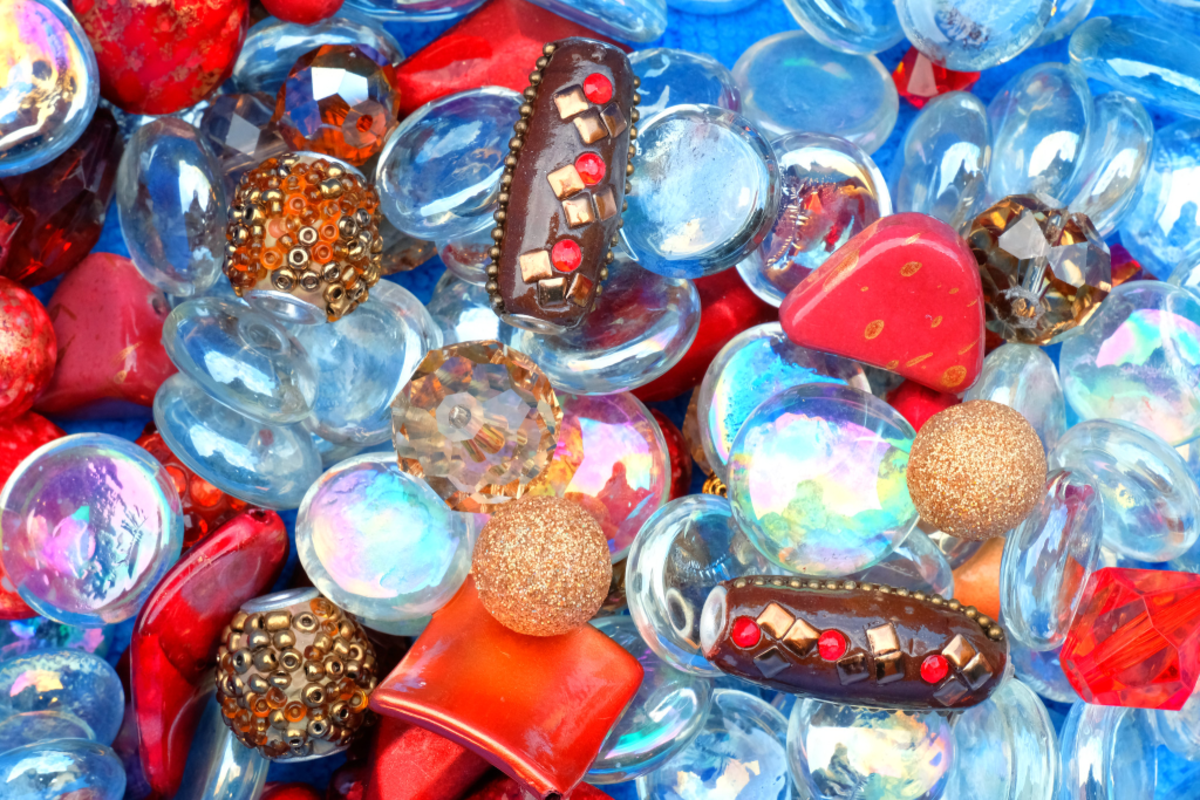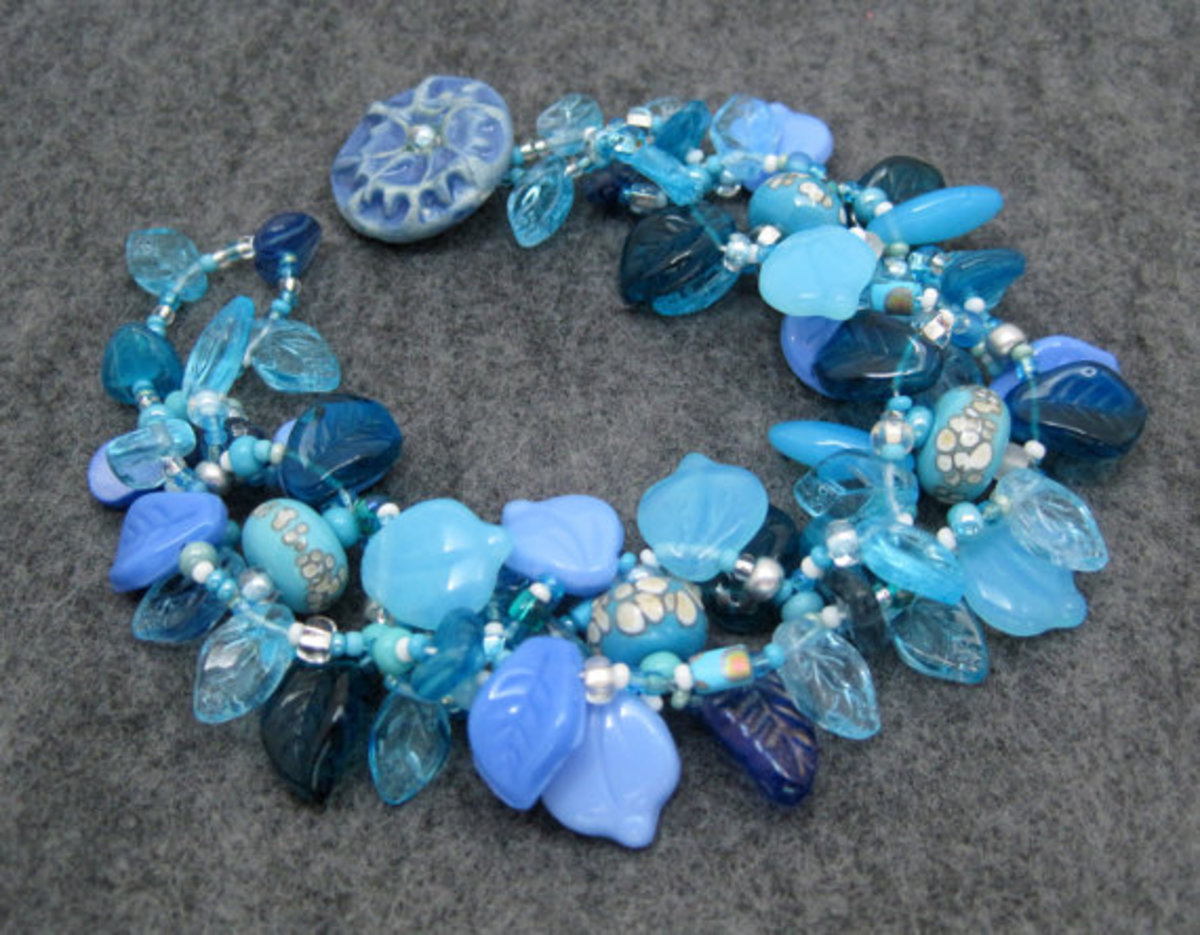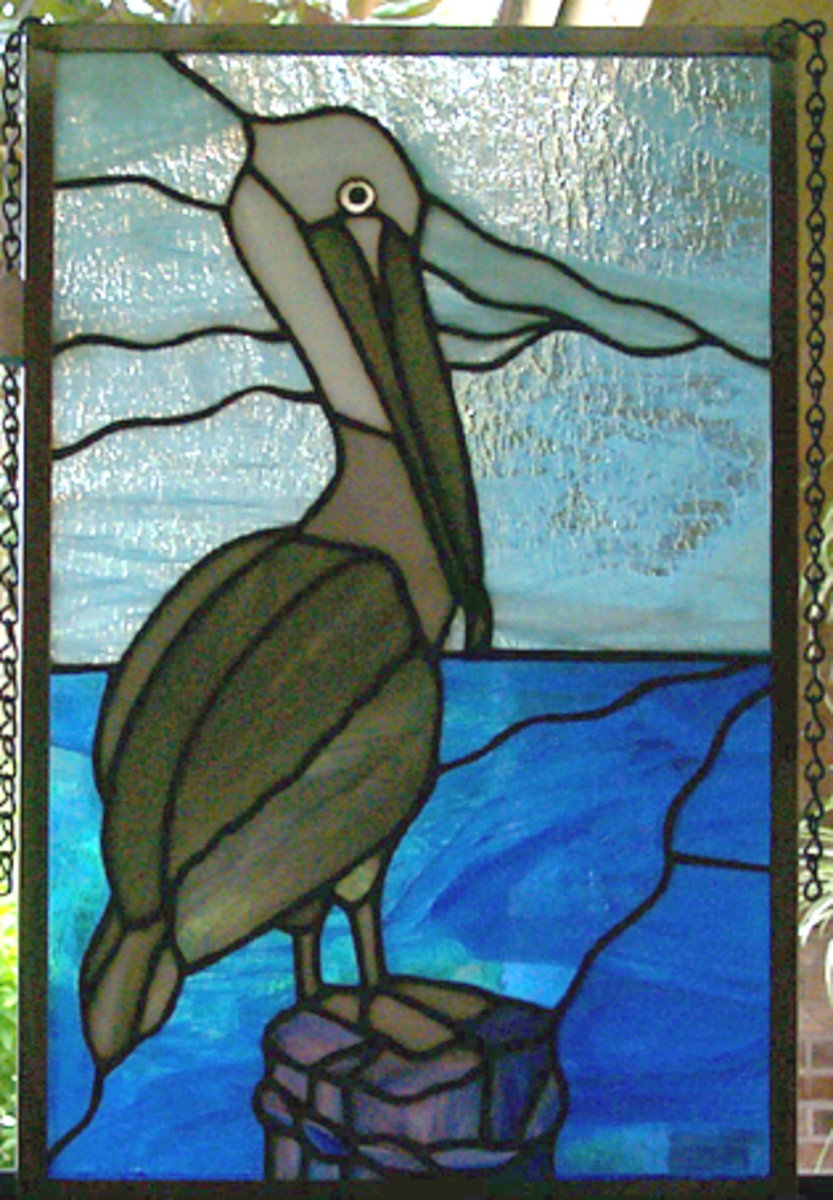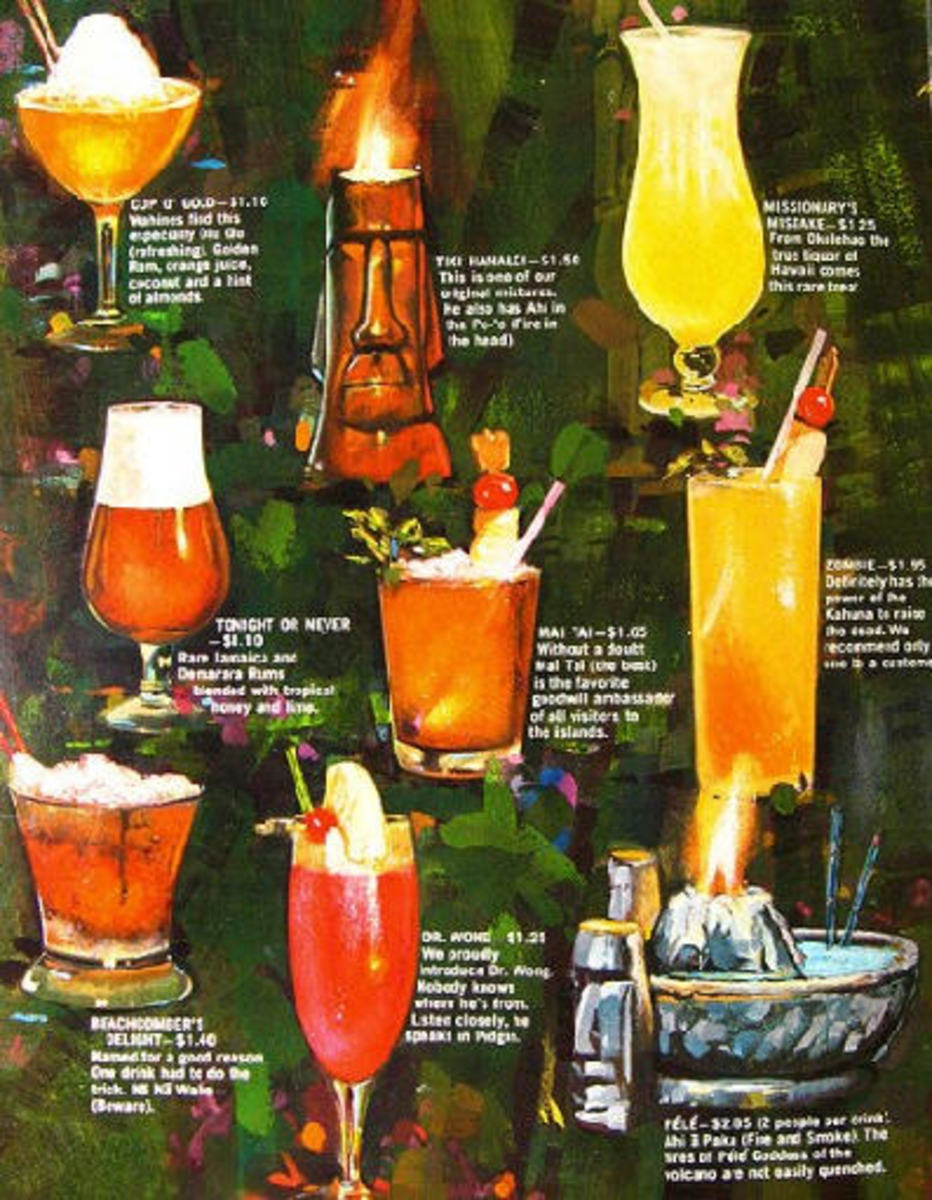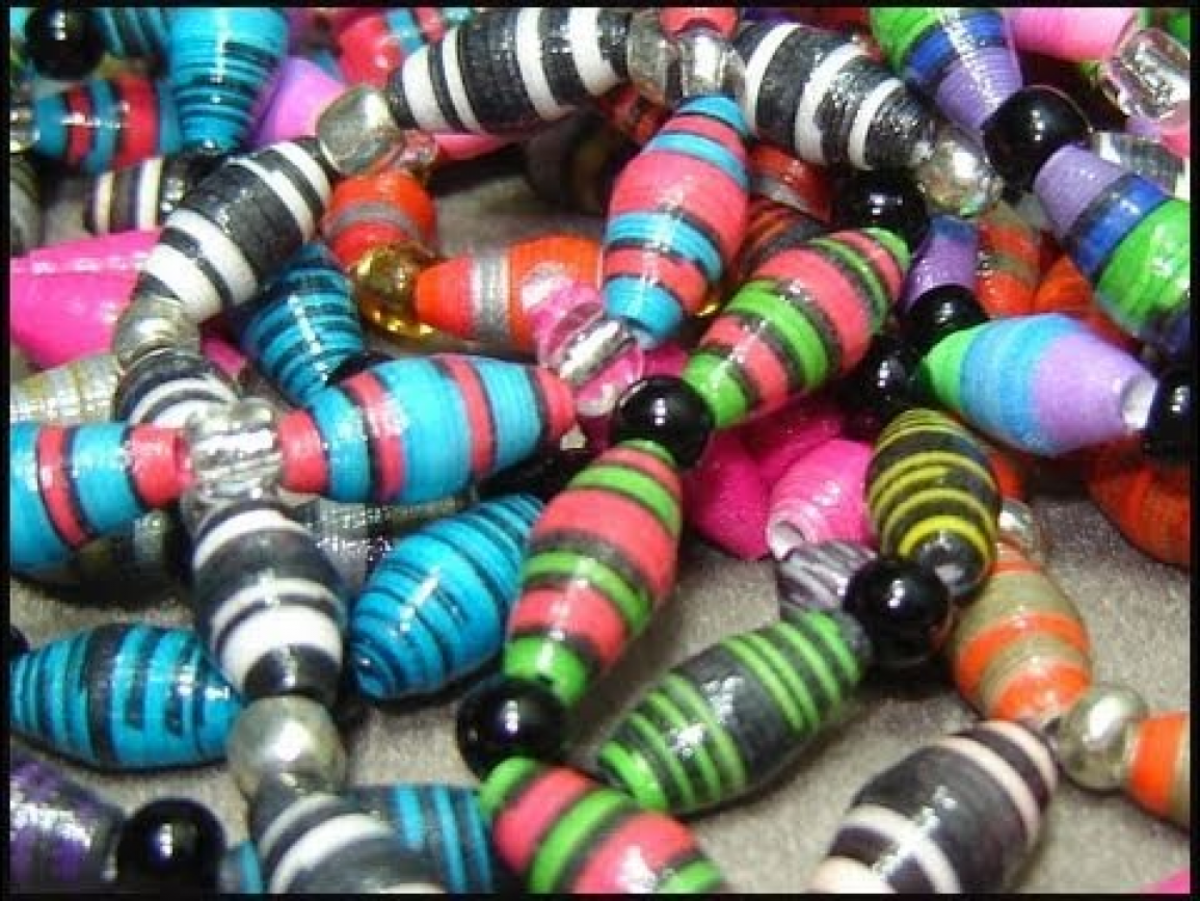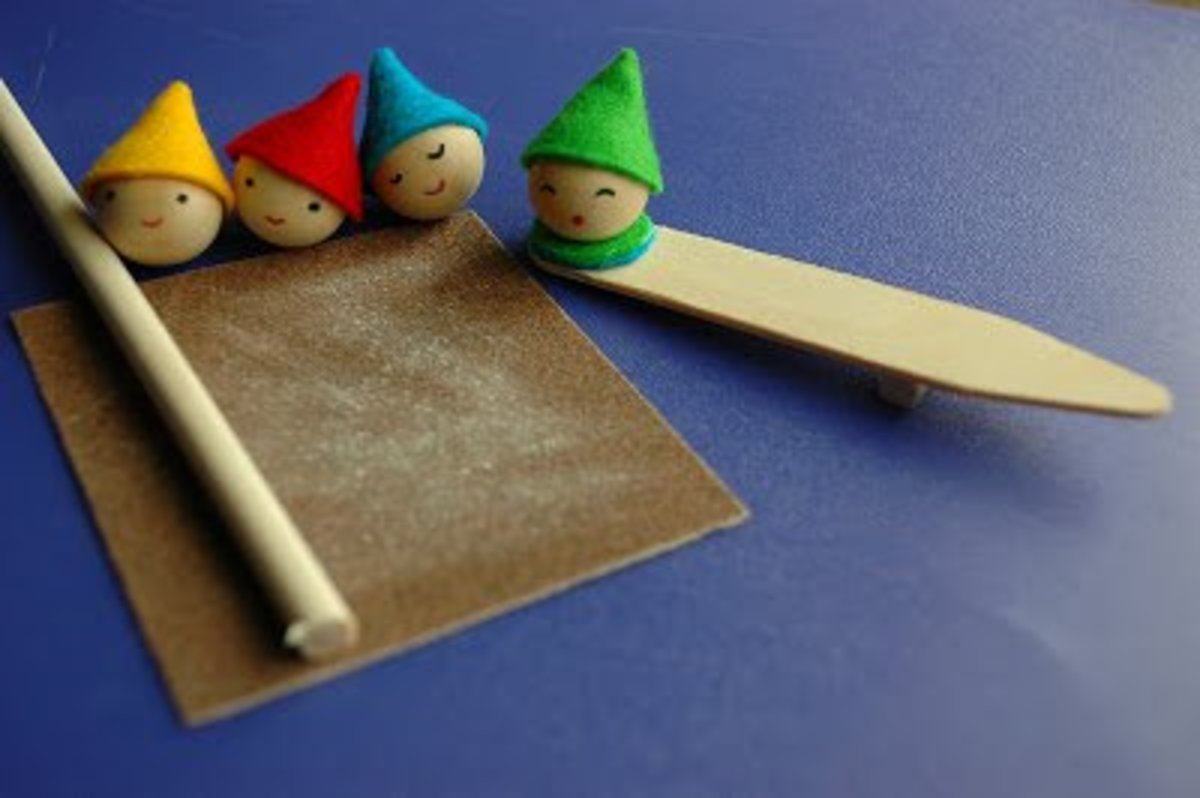Do It Yourself Lampwork Beads
![Image Attribution: By Hector Mandel (Own work) [GFDL (http://www.gnu.org/copyleft/fdl.html) or CC-BY-SA-3.0 (http://creativecommons.org/licenses/by-sa/3.0)], via Wikimedia Commons Image Attribution: By Hector Mandel (Own work) [GFDL (http://www.gnu.org/copyleft/fdl.html) or CC-BY-SA-3.0 (http://creativecommons.org/licenses/by-sa/3.0)], via Wikimedia Commons](https://usercontent1.hubstatic.com/9682476.jpg)
A Beginner's Primer
Glass bead necklaces and bracelets are a popular trend right now, however they can be extremely expensive. Making your own is not overly difficult as long as basic safety precautions are followed.
In this article I will discuss the various necessary safety precautions and the basic equipment you will need to get started on making your own lampwork glass beads. Lampwork is the process of moulding glass into the forms you wish using flame usually from a torch.
I was first introduced to beadmaking at an SCA event called Fruits Of Our Labour (aka FOOL). FOOL is a great event, it's a weekend of camping and practical classes. The form I was introduced to was using a reproduction of a viking age bead forge. It was a lot of fun, but I didn't manage to produce even a single bead.
The next time I tried my hand was at an event that the SCA is tied too but doesn't run called Forward Into The Past (FITP). Its another day of practical and theoretical classes on a wide variety of historical topics. At FITP I was introduced to the art using a hothead torch. I found this method much easier, and I managed to produce my first usable bead. For historical reenacting purposes the beads created aren't accurate from a historical, point of view, but they look cool and I doubt even most experts could tell. From a fashion point of view lampworking with a torch is much more effective and easier to maintain the proper temperatures.
Starter Kit

Didymium Glasses - Protect Your Eyes
One of the single most important pieces of safety equipment for lampworking is didymium glasses. When working with glass the sodium in glass gives off a bright yellow flair that can (and will if you don't protect your eyes) burn your corneas. ALWAYS wear proper eye protection.
Fire Extinguisher
You are working with flame and highly combustible gasses. It is always best to have a fire extinguisher on hand when making your own lampwork beads.
With any luck you'll never need a fire extinguisher, but as with most things if you don't prepare for disaster, that's when disaster strikes. The glass is heated to ridiculous temperatures and will cause damage to yourself and anything it touches if you are not careful, fires are easy to start, and easy to put out if you are prepared.
The Hothead
Your torch is the most critical piece of equipment you will use when making your own lampwork beads. Hothead is the nickname given to the style of torch which simply screws on to a tank of gas. The one shown here is a pretty standard one, you can get ones with all sorts of add ons to make life easier, but this one is a great way to start.
![By Joe Mabel (Photo by Joe Mabel) [GFDL (http://www.gnu.org/copyleft/fdl.html) or CC-BY-SA-3.0 (http://creativecommons.org/licenses/by-sa/3.0/)], via Wikimedia Commons By Joe Mabel (Photo by Joe Mabel) [GFDL (http://www.gnu.org/copyleft/fdl.html) or CC-BY-SA-3.0 (http://creativecommons.org/licenses/by-sa/3.0/)], via Wikimedia Commons](https://usercontent1.hubstatic.com/9682488.jpg)
Type of Gas
When working with glass there is a number of types of gas you can use to melt your rods.
Propane
Technically you can use propane for lampwork, however I strongly recommend against it, while propane does burn hot enough to melt glass it is barely hot enough which means it will take much longer to get the glass soft enough to work with. The biggest advantage propane has is how easy it is to source and it is relatively inexpensive.
MAPP
MAPP is, quite simply, supercharged Propane. MAPP stands for methylacetylene-propadiene propane. It burns hotter and will heat the glass quicker.
Propylene
Propylene is hard to source in small quantities that people normally work lampworking, but it burns plenty hot enough.
The gas you use is ultimately up to you, experiment with the different types and decide for yourself which you like best.
The Mandril
The Mandril is the next essential piece of equipment you will need. It is on the mandril that you will actually make the bead. A mandril, is simply a wire which you wind the molten glass around to form a bead. There are a number of different commercial mandrils available on the market, some are shown below but you might want to consider using welding rods, they work just as well, are easier to find, and are less expensive. Remember to pay attention to the diameter this will determine the size of the hole in your bead.
Bead Release
Bead release is nothing more than clay with special composition to help get the glass off the mandril. If you make a bead without bead release you fuse the glass to the mandril and it will never come off.
To use bead release first light your hothead, dip the mandril in the bead release so you have a nice even coating on the top portion of the bead release. Put the mandril over the flame (at this point you should have your glasses on) and slowly rotate the mandril spinning away from your body (always spin the mandril away from you. Continue to spin the mandril until the bead release has completely changed colour. At this point you are ready to put glass to the mandril, we'll get to that later though.
Glass Rods
When picking out glass to use for making your beads the single most important thing is always use glass of the same COE (coefficient of expansion) if you don't you could create little glass grenades instead of beads that will explode at some point during cooling or annealing. COE 104 is the most common type used for beadmaking.
To actually put glass to the mandril have a prepared mandril handy put the end of a glass rod to the flame (make sure you have your glasses on before you put glass to the flame, it is at this point you will damage your eyesight without them) and watch for the glass to start to sag. Once this happens use your other hand to put the mandril underneath the sagging glass and spin the mandril away from you. the glass will adhere to bead release and start to form. At this point do NOT worry about how even the glass is, just get enough glass on the mandril for the size of bead you want.
To even your bead out remove the glass rod and set aside keeping the glass on the mandril in the flame. Continue to spin the mandril in the flame and you can even the bead out by making the glass fall slightly in the direction you wish. Use gravity to allow the glass to flow downward and continuously turn it until the bead is even. Once the bead is as even as you want slowly remove it from the flame and allow the colour to return slightly. It is at this point you will want to place the bead in a crockpot (preset to high) with vermiculite, allow it to "cook" in the crockpot for 12-48 hours.
There are a variety of methods available other than they crockpot such as specialized pouches to cool the glass slowly, but the crockpot method has the advantage of cooling it much slower than any other method.
Gloves
Gloves are not necessary and could in fact pose a risk. Your hand should never get close enough to the flame to be at risk of burning even while holding the mandril in the flame. Between the glass and the bead release the mandril should not head up enough to cause any issues.
Annealing
Annealing your bead is the final step in lampwork beadmaking. This cooks the bead in a kiln to make sure the glass is properly fused and won't break easily. Its an important step if you want to sell your beads, if you are using them for personal jewelry and don't mind if they end up breaking then you can technically skip the annealing process.
Vermiculite
Vermiculite is a gardening filler. Its great for lampworking because it allows the bead to cool very slowly and won't cause shattering. Using this method to anneal isn't nearly as good as annealing in a bead kiln, but it is a lot cheaper. If you aren't going to sell your beads using a crock pot and vermiculite will probably be just fine for you.
Books on the Subject
Once you have the basic method down you can play with some more advanced tricks. There are a number of great resources available on Amazon for lampworking. If you are only going to buy one book I highly recommend Passing the Flame.
© 2013 Jeff Johnston







